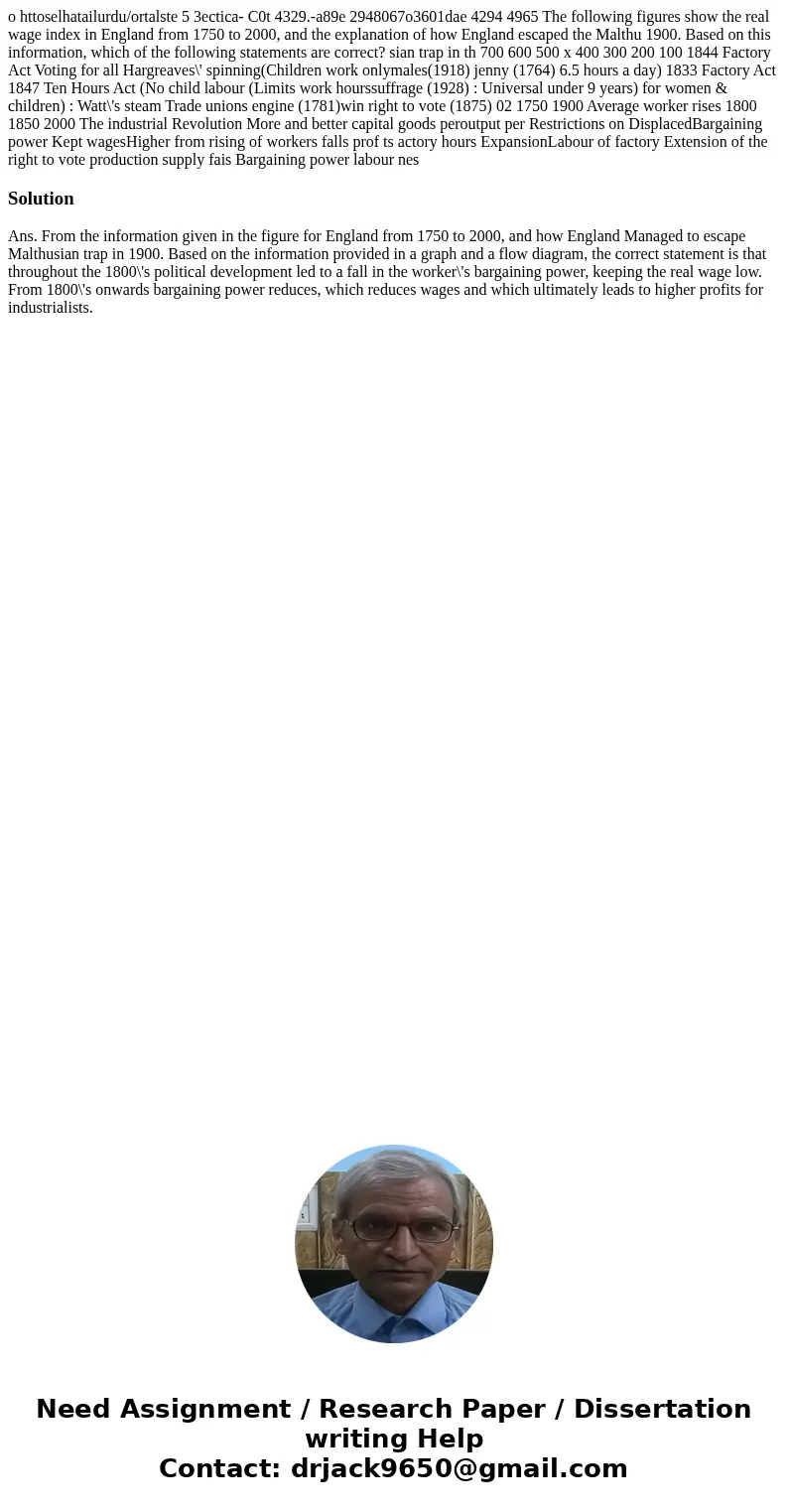o httoselhatailurduortalste 5 3ectica C0t 4329a89e 2948067o3
o httoselhatailurdu/ortalste 5 3ectica- C0t 4329.-a89e 2948067o3601dae 4294 4965 The following figures show the real wage index in England from 1750 to 2000, and the explanation of how England escaped the Malthu 1900. Based on this information, which of the following statements are correct? sian trap in th 700 600 500 x 400 300 200 100 1844 Factory Act Voting for all Hargreaves\' spinning(Children work onlymales(1918) jenny (1764) 6.5 hours a day) 1833 Factory Act 1847 Ten Hours Act (No child labour (Limits work hourssuffrage (1928) : Universal under 9 years) for women & children) : Watt\'s steam Trade unions engine (1781)win right to vote (1875) 02 1750 1900 Average worker rises 1800 1850 2000 The industrial Revolution More and better capital goods peroutput per Restrictions on DisplacedBargaining power Kept wagesHigher from rising of workers falls prof ts actory hours ExpansionLabour of factory Extension of the right to vote production supply fais Bargaining power labour nes 
Solution
Ans. From the information given in the figure for England from 1750 to 2000, and how England Managed to escape Malthusian trap in 1900. Based on the information provided in a graph and a flow diagram, the correct statement is that throughout the 1800\'s political development led to a fall in the worker\'s bargaining power, keeping the real wage low. From 1800\'s onwards bargaining power reduces, which reduces wages and which ultimately leads to higher profits for industrialists.

 Homework Sourse
Homework Sourse